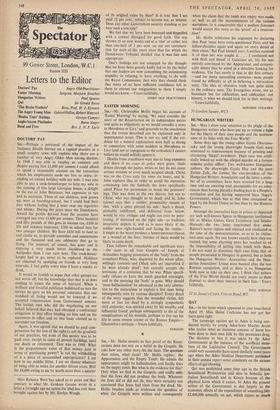Sta,—Mr. Hollis assures us that proof of the Resur- rection
does not rest on a belief in the Gospels. He asks how any other story fits the facts. The question then arises, what facts? Mr. Hollis replies: the Appearances and the Empty Tomb. He admits the appearances might be hallucination and finally fixes on the empty tomb. But what is the evidence for this? Only what we find in the Gospels, and really only that the Jews did not produce the body. Whatever the Jews did or did not do, they were certainly not convinced that Jesus had risen from the dead. Mr. Hollis brushes aside as irrelevant the question of when the Gospels were written and consequently when the claim that the tomb was empty was made, as well as all the inconsistencies of the various narratives. Is it conceivable that a modern lawcourt would accept this story as the 'proof' of a resurrec-
tion? •
Mr. Hollis reinforces his argument by declaring that Paul 'must have cross-questioned Peter and his fellow-disciples again and again on every detail of their claim.' But Paul himself says, 'I neither received it of man nor was taught it. . . . I conferred not with flesh and blood' (I Galatians xii, 16). He was entirely convinced by the Appearance, and categori- cally denies that he acted as a detective looking for evidence. The fact surely is that in the first century —and for many succeeding centuries—most people found no difficulty at all in believing a miraculous story. The idea of objective truth was quite alien to the ordinary man. The Evangelists wrote, not as historians but for edification; and edification, not history, is what we should look for in their writings. —Yours faithfully,
51 Gordon Square, WC1
MARJORIE STRACHEY






























 Previous page
Previous page